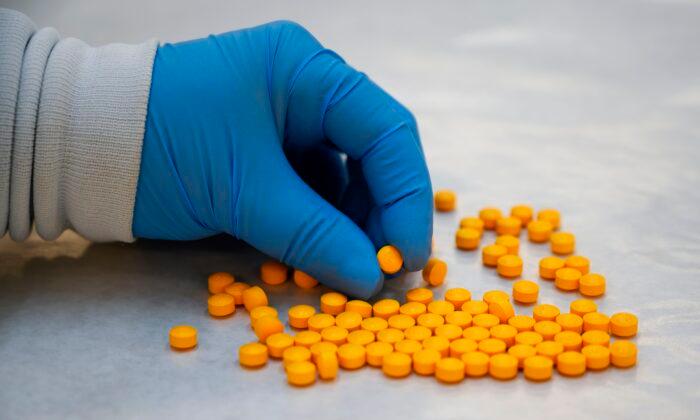More than a year after Oregon became the first state in the nation to decriminalize drugs, officials are admitting the pioneering experiment has failed so far.
Overdoses in just one county have jumped by 700 percent.
Seizures of fentanyl, marijuana, and opioids have skyrocketed.
Funding for programs intended to provide drug users with treatment has not materialized. And very few drug users are showing any interest in obtaining that treatment.
The experiment began when Oregonians passed Ballot Measure 110 in 2020, which decriminalized the possession of “personal amounts” of heroin, cocaine, methamphetamine, and other drugs.
Under the new law, which took effect in February 2021, those found in possession of drugs would receive a maximum fine of $100, which would be waived if they called a hotline for a health assessment to enter a drug treatment program.
Treatment programs were to be funded by redirecting millions of dollars in tax revenue collected from the state’s legal marijuana industry.
From the onset, many of the state’s small cities were unhappy with this plan, as the new program reduced the amount of funding they had been promised when the state legalized recreational marijuana in 2015.
In the first year of the new law, an estimated 136 people entered treatment and just 13 percent of the $300 million budget for treatment was spent.
Meanwhile, Oregon State Police (OSP) troopers seized 482,111 doses of fentanyl in 2021, according to testimony by OSP Superintendent Terri Davie. That’s up from just 27,282 in the previous year, she told the Oregon House Interim Judiciary Committee on June 3.
Troopers also seized 966,328 pounds of marijuana in 2021, which is more than 10 times the 90,010 pounds seized in 2020 and eclipses the 20,509 in 2019, Davie said.
In addition, more than 10,188 doses of oxycodone were seized in 2021, compared with just 1,189 in 2020.
Secretary of State Shemia Fagan testified before the Oregon House Interim Committee on Behavioral Health on June 2. “When the voters of Oregon passed Measure 110,“ she said, ”we did so because it was a change of policy in Oregon to improve the lives of people, to improve our communities.
“Instead, in many communities in Oregon, we’ve seen the problem with drug addiction get worse.”
According to the National Survey on Drug Use and Health, Oregon has the worst drug addiction rate in the country, with 9 percent of residents admitting they are addicts and 12 percent acknowledging they are alcoholics.
“Our voters were fooled into believing this would be the answer to our behavioral health, homelessness, and crime issues,” Republican state Rep. Lily Morgan told The Epoch Times.
“Now fentanyl and other drugs are out of control and we’re finding that virtually no one is getting into treatment.”
The state was just not ready to implement the programs required by the law, according to testimony from the Oregon Health Authority (OHA).
Even as the requests from offenders to receive treatment have failed to materialize as expected, hundreds of applications for grants to provide those services have piled up at OHA, waiting for review and approval.
Steve Allen, OHA’s behavioral health director, testified to the Behavioral Health Committee that “Ballot Measure 110 has not been implemented without significant bumps along the way.”
“It’s a $300 million project that’s never been done before. We’ve made some missteps at Oregon Health Authority,” he said.
Meanwhile, Morgan, who is a member of both the state Judiciary and Behavioral Health committees, said that lives are being lost.
“Director, you’ve mentioned a couple of times that you’re waiting to see, and yet we have overdoses increasing at drastic rates,” Morgan told Allen.
“In my community, we see a 700 percent increase in overdoses and a 120 percent increase in deaths. How long do we wait before we have an impact that we’re saving lives?”
Allen acknowledged there has been a “dramatic” increase in overdoses and overdose deaths statewide, and he attributed much of the cause to the recent arrival of methamphetamine laced with fentanyl—a synthetic opioid that is so powerful that a tiny amount can kill—and illicit pills containing fentanyl.
“So clearly, if we were to do it over again, I would have asked for many more staff much quicker in the process,” Allen told the committee.
“We were just under-resourced to be able to support this effort, underestimated the work that was involved in supporting something that looked like this, and partly we didn’t fully understand it until we were in the middle of it.”
He said that his agency is now working to clear the backlog of applications for funding and will soon award approximately $280 million to more than 250 behavioral health organizations to fund drug treatment and recovery programs.





